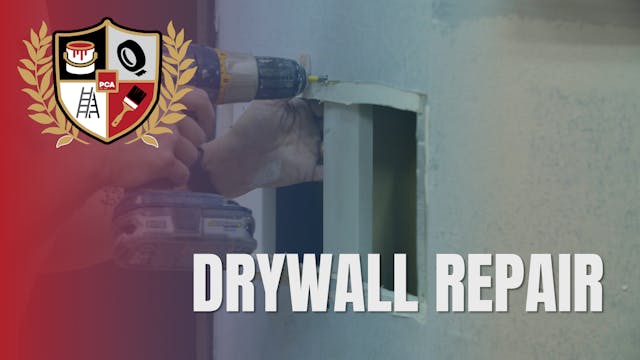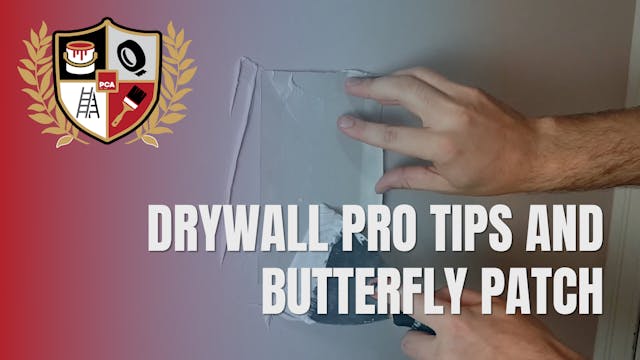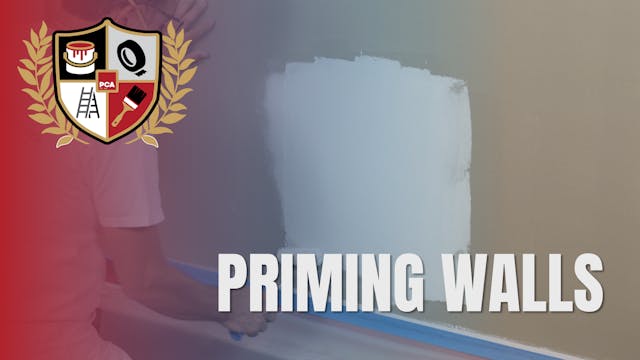Drywall repair begins with understanding the materials and tools you’ll need to do the repair. And we always want to be thinking about ways to reduce dust. Ideas include using a vacuum sander when available, covering the vents, cold-air returns, and doorways with poly. In any case, always wear a dust mask to protect yourself from the fine particles of sanding.
Up Next in Level 2
-
Drywall Repair
One of the most critical steps in the room painting process is patching and repairing the existing drywall. Before the actual repairs take place, we need to determine what kind of patching material to use depending on the size of the repair and the amount of dry-time we want to give the patch.
...
-
Drywall Pro Tips and Butterfly Patch
At PCA we’ve gathered decades of experience from expert craftspeople. In this video, we’ll share some tried and true professional tips to keep in mind when repairing drywall. Let’s take a look…
-
Priming Walls
After drywall mud is applied to a wall, the mud acts like a sponge. The mud will absorb more sheen out of the paint than the rest of the wall. When everything dries, the mudded areas will show as dull spots and the sheen will not be consistent over the entire wall. This is called flashing. What e...


